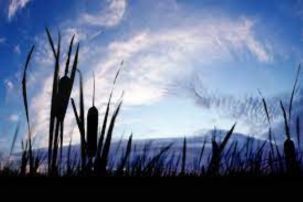Lesson summary
Students will explore the relationship between CO2, plants and people. Students will begin by observing two experiments: the first one demonstrating how carbon dioxide produced by plants during respiration; the second one demonstrating how humans exhale carbon dioxide. Students are asked to use the Predict, Observe, Explain thinking tool when observing the experiments. Finally, they are asked to create an infographic showing the role of plants in the carbon cycle.
These activities “… are an invaluable tool for teachers to address climate change in an educationally relevant, scientifically sound, and action-based way.” – Tim Flannery (Read more)
Learning intentions:
Students will...
- recognise the role of CO2 in respiration and photosynthesis
- observe the effects of photosynthesis and respiration of plants
- understand the role of plants in the carbon cycle.
Lesson guides and printables
Curriculum links
Select your curriculum from the options below.
Lesson details
Curriculum mapping
Australian Curriculum content descriptions:
Year 10 Science:
- Global systems, including the carbon cycle, rely on interactions involving the biosphere, lithosphere, hydrosphere and atmosphere (ACSSU189)
- Different types of chemical reactions are used to produce a range of products and can occur at different rates (ACSSU187)
General capabilities: Critical and creative thinking.
Cross-curriculum priority: Sustainability OI.1, OI.2.
Syllabus Outcomes: SC5-16CW, SC5-12ES.
Time required: 60 mins+ – this activity can be conducted over two sessions.
Level of teacher scaffolding: Medium – Oversee activity, conduct experiment, facilitate discussion.
Resources required
- Experiment 1. Small leafy plant, large jar with lid (big enough to contain the plant), small container with lime water
- Experiment 2. Cup of lime-water, straw, student volunteer.
- Digital technology opportunities: Infographic creation (DIY infographic background information), digital sharing capabilities.
- Homework and extension opportunities: Includes opportunities for homework or extension.
- Key reading from We Are the Weather Makers: Introduction – What Is Climate Change?
- Further reading from the book: Chapter 3 – The Greenhouse Gases
Additional info
Cool Australia would like to acknowledge:
- Tim Flannery
- David Harding, Rose Iser, Sally Stevens
- Text Publishing and Purves Environmental Fund
- Climate Council


Welcome back!
Don't have an account yet?
Log in with:
Create your free Cool.org account.
Many of our resources are free, with an option to upgrade to Cool+ for premium content.
Already have an account?
Sign up with:
By signing up you accept Cool.org's Terms and Conditions(Opens in new tab) and Privacy Policy(Opens in new tab).